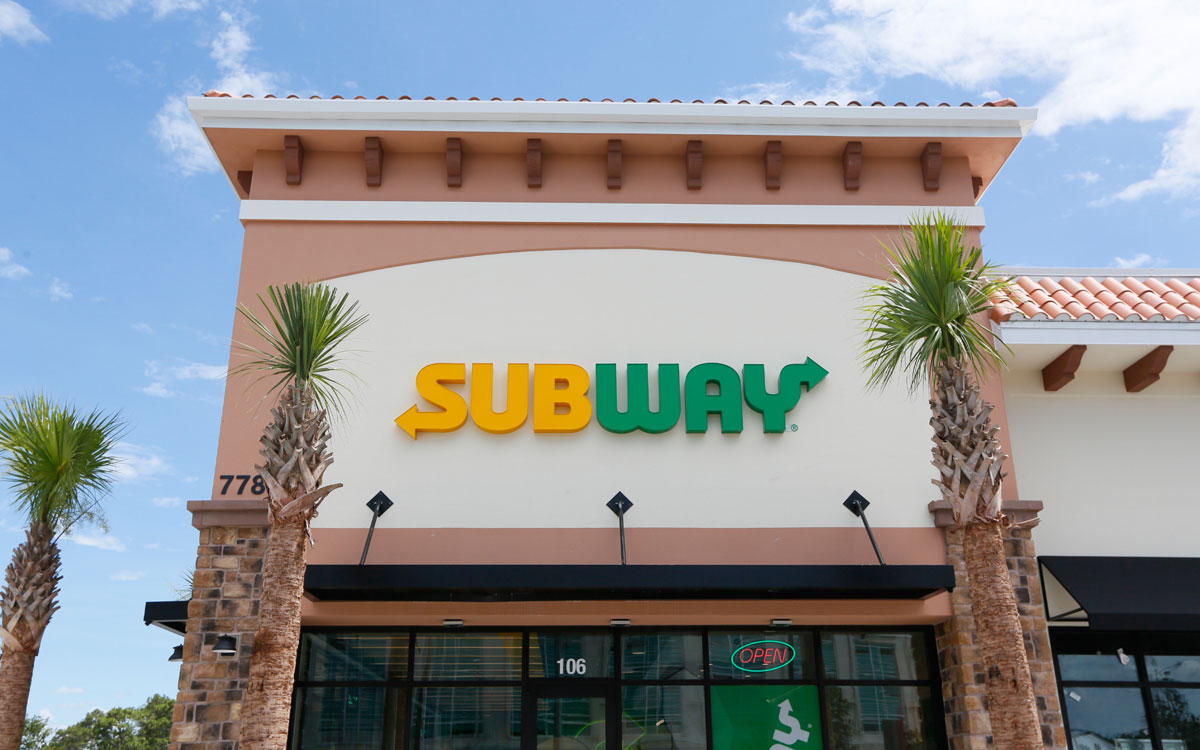Subway’s chief executive officer Suzanne Greco is stepping down, the company announced Wednesday afternoon (May 2). Greco has led the world’s largest quick-service chain since her brother Fred DeLuca’s death in 2015. DeLuca founded Subway at the age of 17 in 1965.
According to a company release, Greco informed Subway’s shareholders of her intent to retire. Trevor Haynes, the 44,000-unit chain’s chief business development officer, is stepping in as interim CEO to oversee day-to-day operations, effective immediately.
READ MORE:
Subway CEO Suzanne Greco’s Fresh Forward plan.
Why Subway isn’t failing, according to Subway.
The power women leading Subway.
Haynes joined Subway in 2016. Greco will work with Haynes to ensure a smooth transition, Subway said, until Greco officially retires on June 30. She will serve as a senior adviser to the company after that.
Greco joined Subway in 1973 making sandwiches, although she was part of the company ever since the first store. Before CEO, Greco served on Subway’s research and development team for more than 20 years, and was promoted to lead the group as vice president of operations and research and development in 2013.
“Subway has been part of my life since I was 7 years old. I love the brand and the company, and I always will, but it’s time for me to have more balance in my life. I feel very good about the strategic moves we’ve made in the last three years, and I have confidence in the future of the company,” Greco said in a statement.
Haynes started with Subway as territory manager in Australia before moving to the U.K. in 2009 to serve as senior area development manager for the U.K. and Ireland. In 2014, he joined Subways’ Milford, Connecticut, team as global director of operations. The company said it will launch a search for a permanent CEO right away.
“We would like to express our deep appreciation to Suzanne for her lifetime of service in building Subway into one of the world’s greatest successes,” Subway’s shareholders added in a statement. “She was there when the first sandwich shop opened, and as CEO she focused on helping the company adapt to a more competitive and dynamic environment. As we work with Suzanne on a smooth transition for the business we cherish, we are grateful for her extraordinary contributions and her insightful and dedicated leadership. We are optimistic about the brand and look forward to working with the next CEO to ensure a robust future for the company.”
Subway has contracted its massive footprint in a significant way in recent years. It closed over 900 restaurants in 2017 and is reportedly shuttering some 500 units this year as it reimagines stores through the Fresh Forward campaign, and searches for prime locations through relocations. Subway unit count fell by 359 in 2016, and, according to Bloomberg, saw its sales fall 1.7 percent in 2016 from $11.5 billion in 2015 to $11.3 billion. The New York Post, citing an internal memo it obtained, said traffic declined 25 percent in the past five years heading into 2018.
But Greco told QSR in February that Subway’s recent trials are a relatively short-term setback in the longer arc of the brand’s history, and that changes to remedy the downturn are in place. A key change involves the company’s Fresh Forward design. The new model—mandatory for all new locations and store remodels—features a vivid color palette, updated beverage stations, new ordering kiosks, and digital menu boards. Fresh Forward also highlights the fresh produce used in stores with a vegetable display case behind the sandwich line. The new design is already driving sales and traffic in stores across the country, Greco said.
Subway is expanding delivery options with third-party providers—some overseas locations have even pioneered in-house delivery service. On February 22, Subway announced plans for a new loyalty program, called Subway MyWay Rewards, which promises a customized experience that allows users to collect and redeem rewards in flexible ways. An improved app is also expected to make online ordering easier for those customers who want to order on their phone rather than go down the sandwich line.
Also, on February 15, Subway launched “Make It What You Want,” a multi-platform marketing campaign designed to highlight the customization of Subway’s offerings in a more contemporary fashion. It marked a shift in strategy as Subway consolidated its U.S. and Canadian media and creative business with one partner for the first time in more than 25 years.









